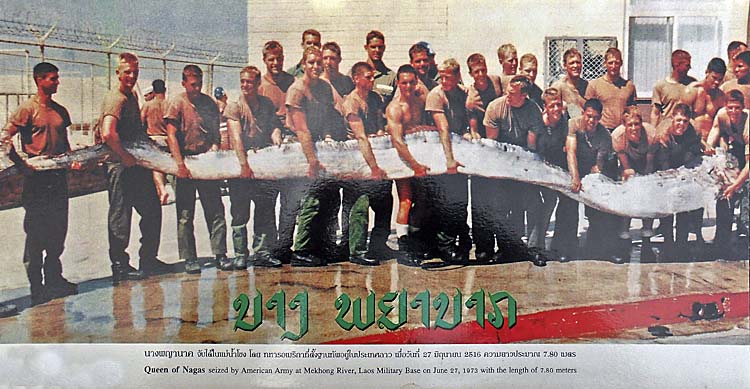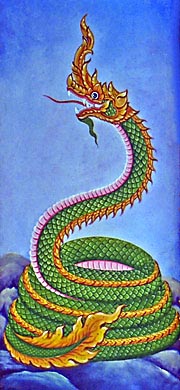The Giant Oarfish
The Giant Oarfish (also: King of Herrings) is the world's longest bony fish. He grows up to more than 17 metres length with a weight of up to 300 kilogrammes and is living in all the world's oceans. Most of the observed specimen were between 5 and 8 metres long. Rarely seen, because living deep in the ocean (in depths between 300 and 1,000 metres), the Giant Oarfish is the source of countless myths on sea serpents.
These fish are mostly seen when already dead and washed onto the seashores or when dying. A dying Giant Oarfish loses control over it's swimming bladder and can not avoid coming up to the surface.

The picture is allegedly made 1973 in an US Army Base in Laos at the Mekong River. In some touristic places it's displayed and selled in shops e.g. at the Golden Triangle. But it's a hoax. As a seawater fish the Giant Oarfish wouldn't come up so far into the Mekong River as to Laos. In fact the snapshot has been done by Dr. Leo Smith in an US Navy SEAL training center on Coronado Island, at the coast of San Diego, California, in 1996. Image by Asienreisender at the Golden Triangle, 2011
Feeding Habits
Oarfish, like many whales, feed mostly on zooplankton, means very small animals. They simply filter the water. Sometimes they get very small fish, jellyfish and here and there squid. The Giant Oarfish doesn't hunt it's food. He's just hanging vertically drifting in the water filtering it.
